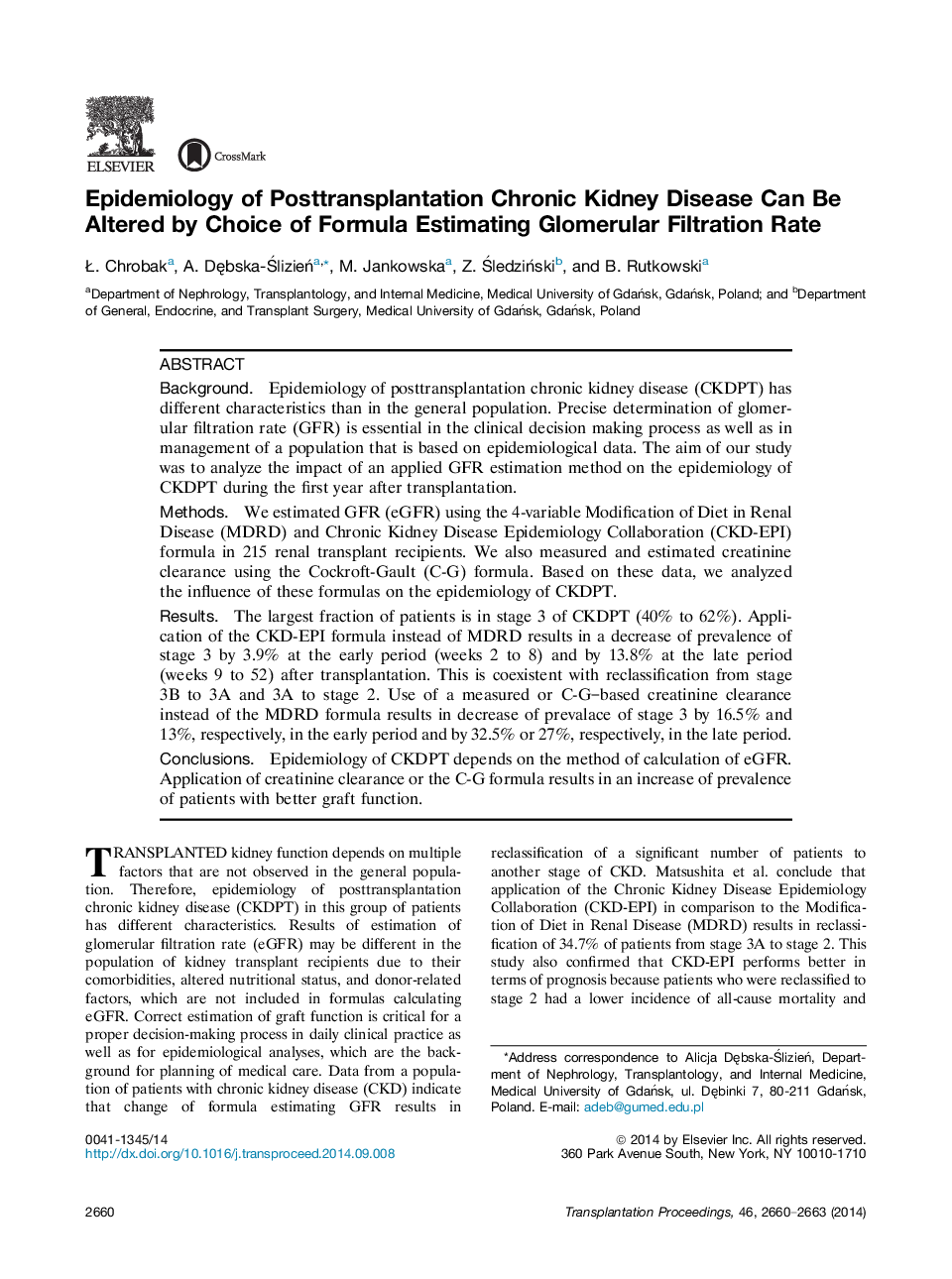| Article ID | Journal | Published Year | Pages | File Type |
|---|---|---|---|---|
| 4257957 | Transplantation Proceedings | 2014 | 4 Pages |
BackgroundEpidemiology of posttransplantation chronic kidney disease (CKDPT) has different characteristics than in the general population. Precise determination of glomerular filtration rate (GFR) is essential in the clinical decision making process as well as in management of a population that is based on epidemiological data. The aim of our study was to analyze the impact of an applied GFR estimation method on the epidemiology of CKDPT during the first year after transplantation.MethodsWe estimated GFR (eGFR) using the 4-variable Modification of Diet in Renal Disease (MDRD) and Chronic Kidney Disease Epidemiology Collaboration (CKD-EPI) formula in 215 renal transplant recipients. We also measured and estimated creatinine clearance using the Cockroft-Gault (C-G) formula. Based on these data, we analyzed the influence of these formulas on the epidemiology of CKDPT.ResultsThe largest fraction of patients is in stage 3 of CKDPT (40% to 62%). Application of the CKD-EPI formula instead of MDRD results in a decrease of prevalence of stage 3 by 3.9% at the early period (weeks 2 to 8) and by 13.8% at the late period (weeks 9 to 52) after transplantation. This is coexistent with reclassification from stage 3B to 3A and 3A to stage 2. Use of a measured or C-G–based creatinine clearance instead of the MDRD formula results in decrease of prevalace of stage 3 by 16.5% and 13%, respectively, in the early period and by 32.5% or 27%, respectively, in the late period.ConclusionsEpidemiology of CKDPT depends on the method of calculation of eGFR. Application of creatinine clearance or the C-G formula results in an increase of prevalence of patients with better graft function.
